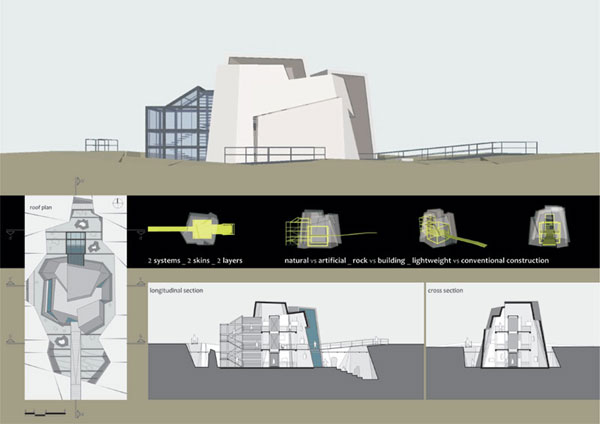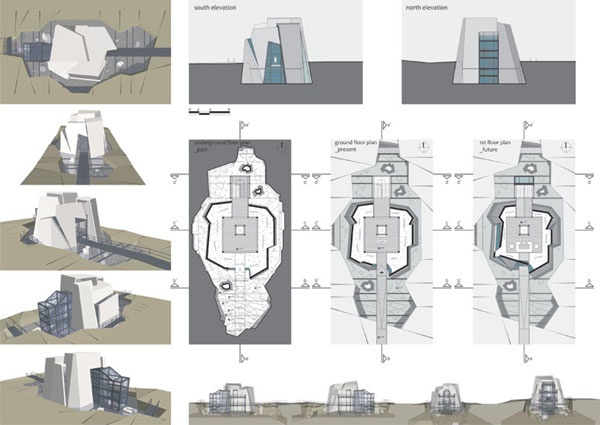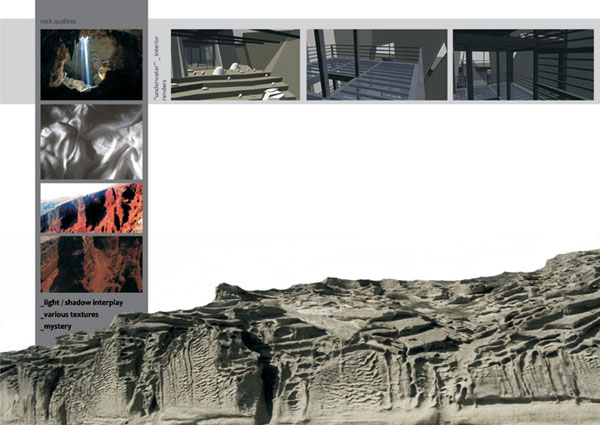STUDENTS PROJECTS
workshops
24 November, 2013
The Semi-Sunken Island
The Greek Pavilion for Copenhagen Climate Change Conference in 2009.
Student: Zouroudi Maria
Technical University of Crete, Department of Architecture
Course: Architectural Design 1
Academic year: 2009-2010
Supervisor: Tripodakis Alexandros
Date of Presentation: 10-02-2010
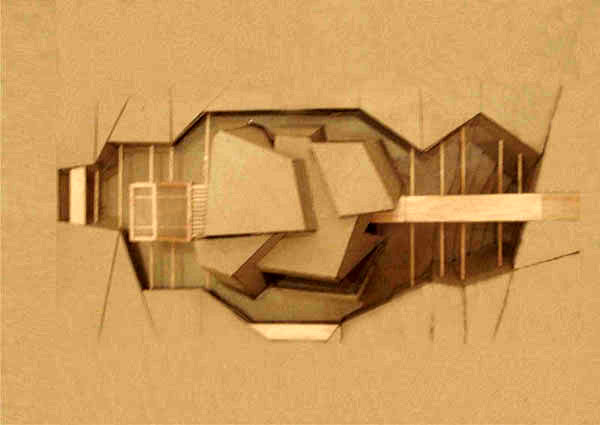
Theme: Greek Nature and Ecology
Fundamental Structure: Cube 7*7*7
As islands are identical of the Greek geomorphology it was decided that the design and organization of the exhibition would focus on the fact that they are in danger of being submerged by the rising seas, due to the greenhouse effect. The project is based in a variety of metaphors that stem from the spatial analysis of the island structure and of the successive rock layers (strata) that are created as years go by.
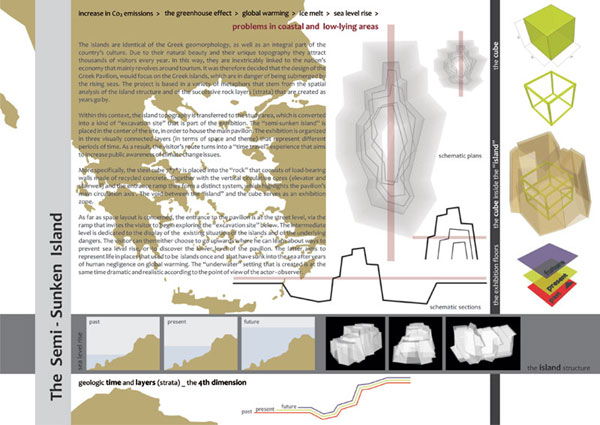
The islands are identical of the Greek geomorphology, as well as an integral part of the country's culture. Due to their natural beauty and their unique topography they attract thousands of visitors every year. In this way, they are inextricably linked to the nation's economy that mainly revolves around tourism. It was therefore decided that the design of the Greek Pavilion, would focus on the Greek islands, which are in danger of being submerged by the rising seas. The project is based in a variety of metaphors that stem from the spatial analysis of the island structure and of the successive rock layers (strata) that are created as years go by.
Within this context, the island topography is transferred to the study area, which is converted into a kind of "excavation site" that is part of the exhibition. The "semi-sunken island" is placed in the center of the site, in order to house the main pavilion. The exhibition is organized in three visually connected layers (in terms of space and theme) that represent different periods of time. As a result, the visitor's route turns into a "time travel" experience that aims to increase public awareness of climate change issues.
More specifically, the steel cube 7*7*7 is placed into the "rock" that consists of load-bearing walls made of recycled concrete. Together with the vertical circulation cores (elevator and stairwell) and the entrance ramp they form a distinct system, which highlights the pavilion's main circulation axis. The void between the "island" and the cube serves as an exhibition zone.
As far as space layout is concerned, the entrance to the pavilion is at the street level, via the ramp that invites the visitor to begin exploring the "excavation site" below. The intermediate level is dedicated to the display of the existing situation of the islands and of the underlying dangers. The visitor can then either choose to go upwards where he can learn about ways to prevent sea level rise, or to discover the lower level of the pavilion. The latter aims to represent life in places that used to be islands once and that have sunk into the sea after years of human negligence on global warming. The "underwater" setting that is created is at the same time dramatic and realistic according to the point of view of the actor - observer.
